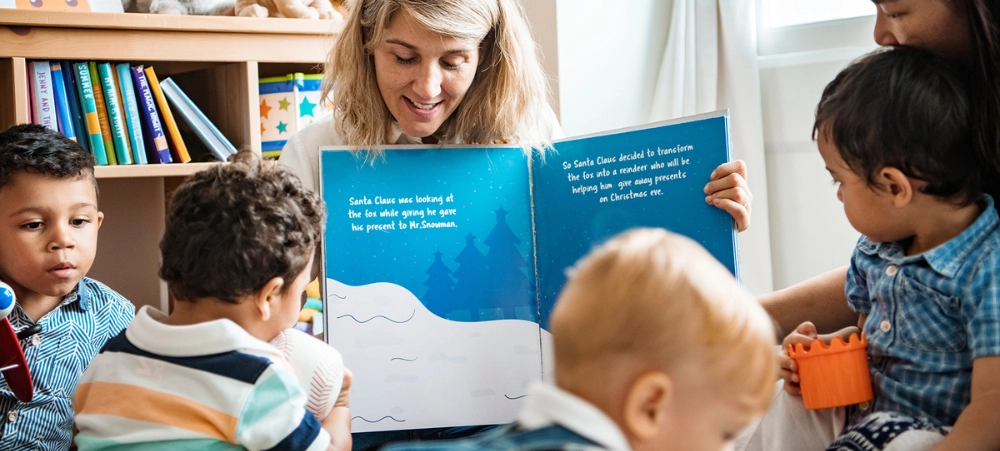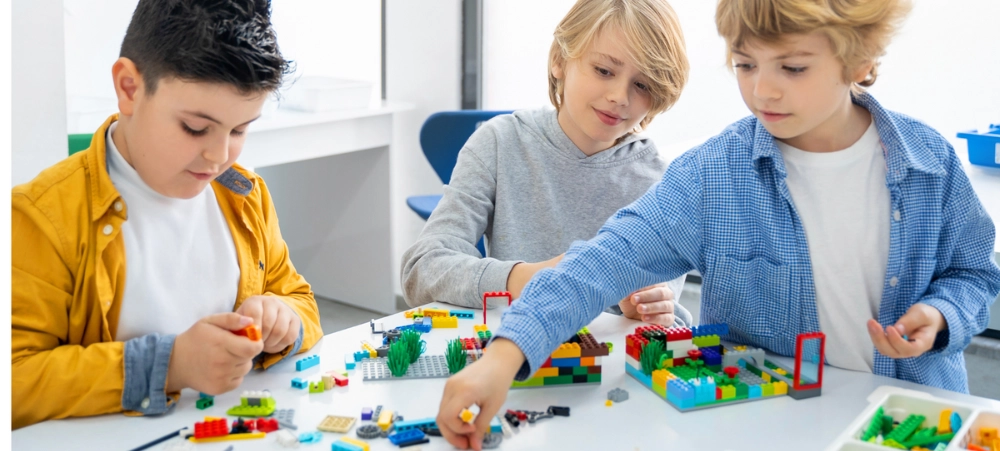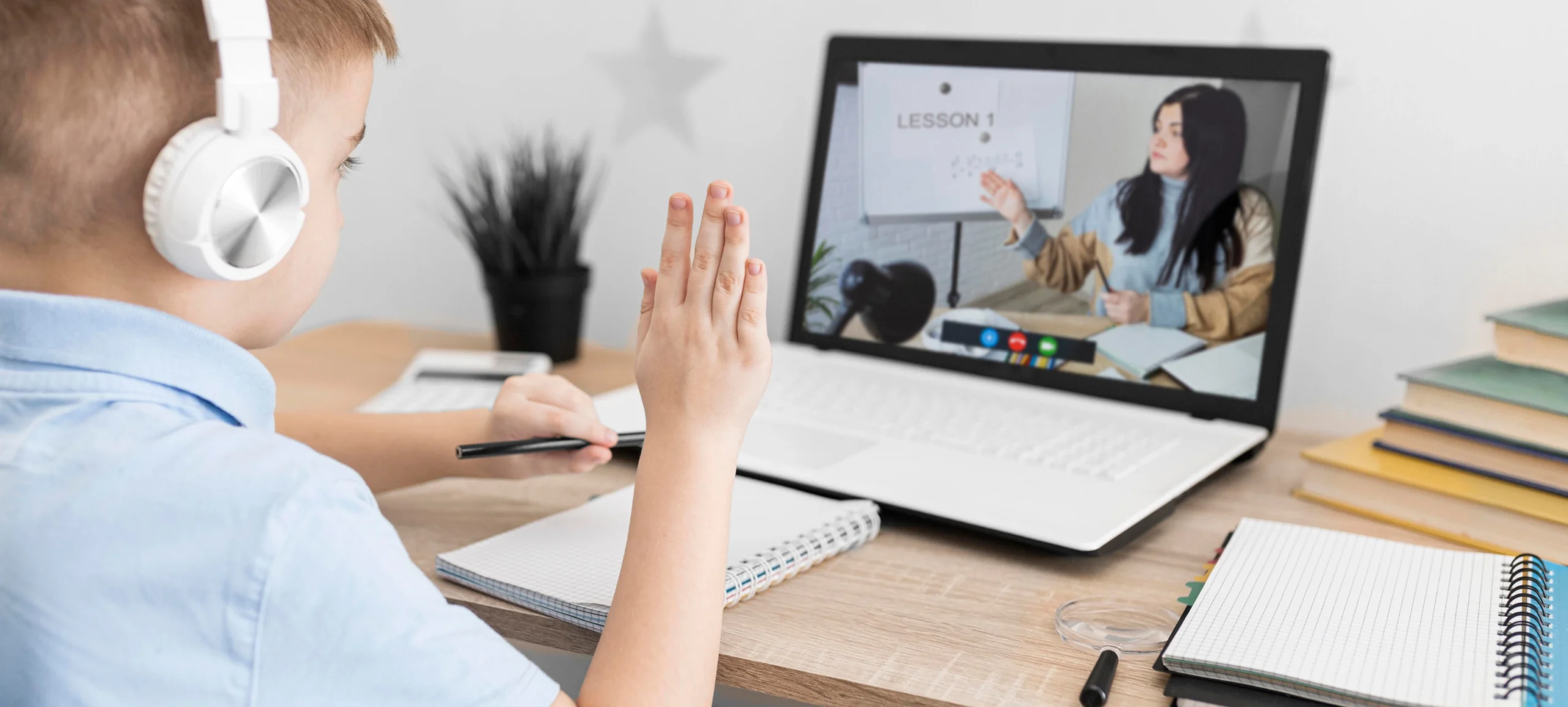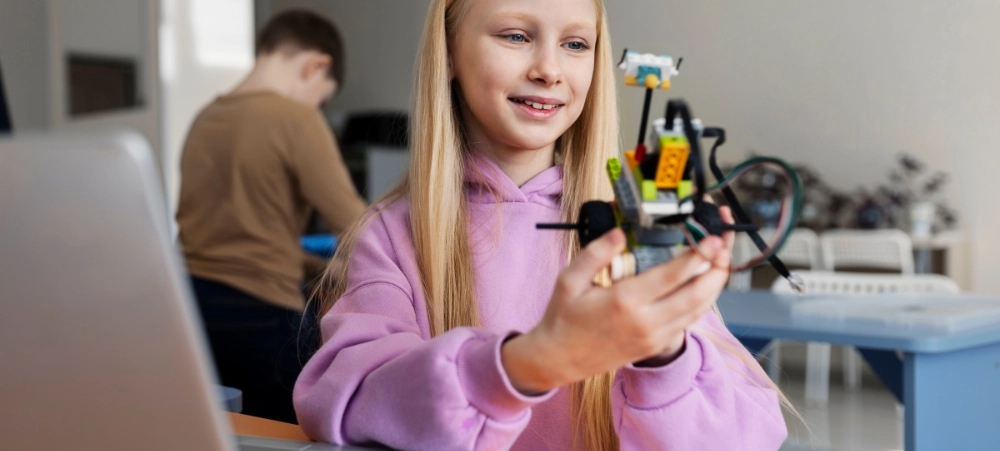Your child is in Grade 4, or preparing to enter Grade 4 next year, and with this comes a wave of mixed emotions: excitement, but also concern and perhaps a sense of overwhelm. As parents, you’ve watched your child grow, and now, as they take the next step in their educational journey, it feels like everything is changing. The leap from foundation phase (Grades 1 to 3) to Grade 4 is significant, demanding more independence, self-discipline, and responsibility from your child. In addition, the thought of them navigating this shift online, without the familiar comfort of in-person teaching, can feel daunting. Are they ready? Can they thrive in an online environment where their teacher is behind a screen and their interactions with classmates aren’t face-to-face? It’s normal to feel uneasy about the unknown. But here’s the truth: online learning is not only a viable option for Grade 4 learners, it could actually be the ideal environment to help your child succeed and grow in ways you may not anticipate. South Africa is also part of the 4IR movement, where technology is transforming every sector, including education. Curro Online is perfectly positioned to provide learners with a modern, flexible, and innovative learning environment that prepares them for the future. In this article, we’ll show you how we offer the structure, support, and flexibility your child needs, while debunking the myths that might be holding you back. As a two-time winner of the Best Online School award at the Best of Joburg Readers’ Choice Awards in 2023 and 2024, we’re confident in the proven success of our approach. Let’s get into it … Understanding the reluctance: the growing need for change It’s easy to see why parents are reluctant to transition younger children into an online learning environment. In Grade 4, children are still developing their foundational skills and emotional maturity. Many parents believe that they should be physically present, guiding their children through each step of their educational journey. This is especially true when it comes to children who are still navigating the complexities of time management, study habits, and independent learning. The concern is often that an online environment might exacerbate their dependency on their parents. Many parents also face the frustrating reality of having to take on more responsibilities than expected – assisting their children with tasks that they feel should be handled by the teacher. A common sentiment is, ‘Why am I doing all this work?’. Parents can find themselves spending hours helping with assignments, explaining concepts over and over, and managing their children’s daily routine (which is also true of any traditional school). This leads to burnout and dissatisfaction, as it feels like they’re doing much of the learning themselves. And with online learning, there’s the added worry that these frustrations will be magnified, or worse – that their child could become isolated, missing out on essential social development. These are valid concerns, and they deserve to be addressed. Addressing the concerns: online learning for Grade 4 offers more, not less Here’s the good news: learning at Curro Online has been intentionally designed to foster independence, confidence, and growth – all while ensuring your child is never alone on their journey. By offering a blended approach that includes live lessons and recorded sessions, we enable learners to take control of their learning while still having access to the support they need. 1. Live lessons with real teachers One of the main fears parents have is that online learning may not provide the level of interaction that children need. At Curro Online, this is far from the case. We have live, interactive lessons with experienced, qualified teachers who are passionate about their subjects and dedicated to your child’s success. These live lessons ensure that learners are actively engaged with their teachers and peers in real-time, creating an environment that encourages participation, critical thinking, and group collaboration. In addition, it is indisputable that children at this age LOVE playing and enjoy games. At Curro Online, teachers make learning through online games possible! Our learners enjoy competing against one another and testing or enhancing their understanding of concepts taught in class, through online games. 2. Catch-up opportunities for missed lessons Life happens. Sometimes, your child might miss a lesson due to illness or another unexpected reason. Unlike traditional schools where missed lessons can easily fall through the cracks, our online learning platform records each lesson, allowing your child to catch up at their own pace without falling behind. 3. Learner support unit: beyond academics A Grade 4 child’s needs extend far beyond academics. At this stage, learners are not only building their knowledge, but also developing emotional intelligence and resilience. Curro Online’s Learner Support Unit provides comprehensive support that addresses academic, emotional, and psychological needs. Whether your child is struggling with a specific concept or facing personal challenges, our support unit is here to guide them, ensuring they have the tools to thrive. This holistic approach sets Curro Online apart, ensuring that your child’s overall well-being is prioritised. Our passionate and supportive teachers also play a pivotal role in ensuring that learners thrive academically, emotionally and psychologically. As such, they also serve as a great source of support for learners at Curro Online. This plays out through check-in messages/calls from teachers, as well as classroom discussions pertaining to various aspects of children’s well-being. 4. Extramural activities that foster connection Perhaps one of the most common concerns we hear from parents is that online learning lacks social opportunities. At Curro Online, we take this seriously and offer a diverse range of extramural activities designed to encourage social interaction and peer-to-peer connection. Here are just a few of the exciting opportunities available to your child: By participating in these activities, your child will have ample opportunities to make new friends, work collaboratively, and enhance their social skills – all within a safe and structured online environment. Why online learning for Grade 4 is the right choice At this point, you may




































